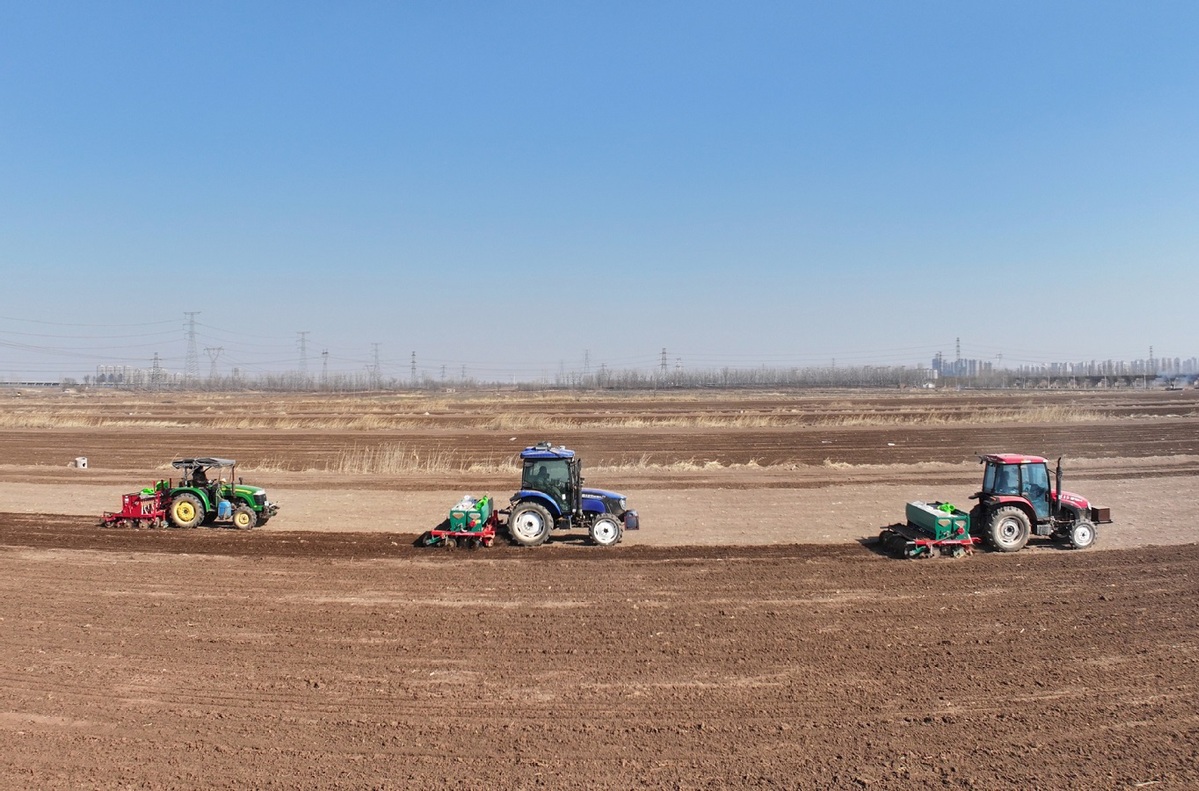Guidelines detail key importance of innovation in developing farming

China's Ministry of Agriculture and Rural Affairs has issued new guidelines outlining 10 key areas for agricultural technology innovation from 2024 to 2028, focusing on breeding new crop varieties, improving arable land quality, developing green and low-carbon agriculture and promoting rural development.
The guidelines call for the development of rapid soil testing technologies to support smart agriculture, alongside a digital soil information system, a multidimensional soil monitoring network, and farmland evaluation and early warning platforms.
Innovation in green and low-carbon agriculture should focus on controlling agricultural non-point source pollution, advancing climate-adaptive farming and promoting ecological circular agriculture, the document states.
READ MORE: New productive forces in agriculture highlighted
"The overall level of China's agricultural science and technology innovation has advanced to the global forefront, with the contribution rate of agricultural science and technology progress surpassing 63 percent," Zhang Xingwang, vice-minister of agriculture and rural affairs, said at a news conference in January.
To improve farmland quality and safeguard food security, efforts will focus on building a robust technology system for farmland conservation and restoring degraded land, including black soil and saline-alkali land.
"In 2024, over 400 million mu (26.67 million hectares) of black soil was restored, and a nationwide 'physical examination' of soil was conducted, with 3.11 million samples collected from 2.87 million sites," Zhang said.
Chen Bangxun, director of the ministry's development and planning department, said China will strengthen the protection and use of arable land and water resources, promote clean agricultural production, launch pilot projects in green and circular farming, and integrate ecological practices into agricultural industries.
The guidelines also call for more technology-driven solutions to improve rural living conditions, develop sustainable rural industries and enhance rural governance.
ALSO READ: China plans to advance rural vitalization drive
Modern agricultural and rural development models should be tailored to regional economic conditions in the eastern, central, western and northeastern parts of the country, the document states.
Key digital technologies should be developed to improve rural governance, expand healthcare access and extend agricultural industrial chains. The integration and sharing of information and data should be promoted to accelerate rural digital transformation.
"The key to agricultural modernization lies in the modernization of agricultural science and technology," Zhang said.
"Next, we will enhance the agricultural science and technology innovation system, nurture leading and fast-growing agricultural technology enterprises, accelerate the application of scientific achievements and provide strong technological support for building a strong agricultural nation," he said.
Xu Nuo contributed to this story.


